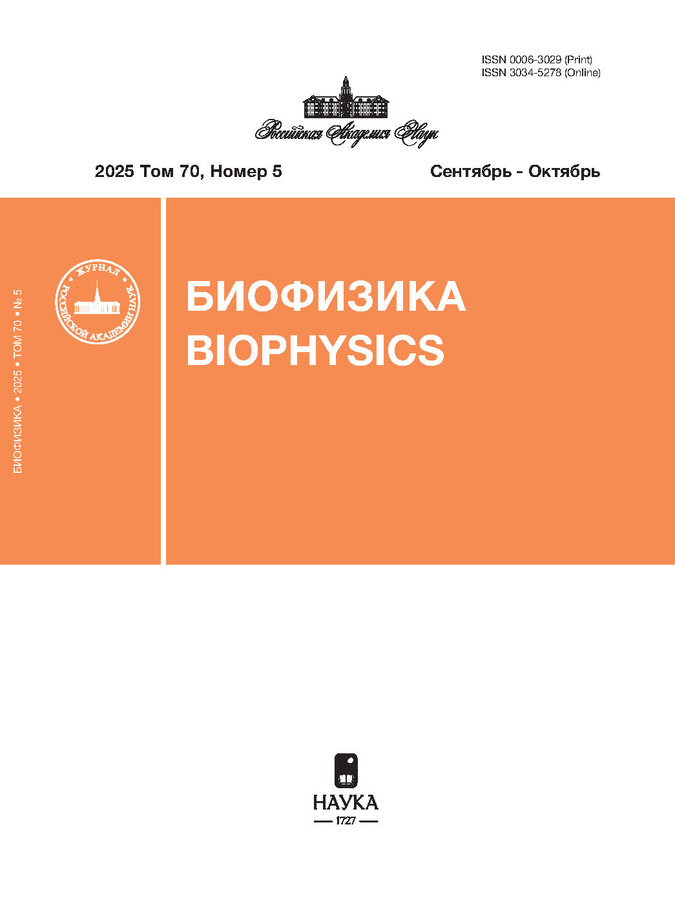Investigation of the Interactions of Methyl-β-Cyclodextrin and Amphotericin B with Erythrocyte Membrane Components by Molecular Docking
- Authors: Sokolova L.O1, Kondratyev M.S1,2, Kalaeva E.A1, Artyukhov V.G1, Nakvasina M.A1
-
Affiliations:
- Voronezh State University
- Institute of Cell Biophysics, Russian Academy of Sciences
- Issue: Vol 70, No 5 (2025)
- Pages: 864-876
- Section: Molecular biophysics
- URL: https://cijournal.ru/0006-3029/article/view/695404
- DOI: https://doi.org/10.31857/S0006302925050035
- ID: 695404
Cite item
Abstract
Keywords
About the authors
L. O Sokolova
Voronezh State University
Email: lyudmila.sokolova.94@mail.ru
Voronezh, Russia
M. S Kondratyev
Voronezh State University; Institute of Cell Biophysics, Russian Academy of SciencesVoronezh, Russia; Pushchino, Russia
E. A Kalaeva
Voronezh State UniversityVoronezh, Russia
V. G Artyukhov
Voronezh State UniversityVoronezh, Russia
M. A Nakvasina
Voronezh State UniversityVoronezh, Russia
References
- Ross M.H. and Wojciech P. Histology: Text and Atlas, 8th ed. (Lippincott Williams & Wilkins, Lond., 2019). doi: 10.26641/1997-9665.2019.4.76-89
- Khary K. and Howard J. Minimum-energy vesicle and cell shapes calculated using spherical harmonics parameterization. Soft Matter, 7 (5), 2138–2143 (2011). doi: 10.1039/c0sm01193b
- Narla J., and Mohandas N. Red cell membrane disorders. International journal of laboratory hematology, 39, 47–52 (2017). doi: 10.1111/ijlh.12657
- Артюхов В. Г., Башарина О. В., Вашанов Г. А., Калаева Е.А., Лавриненко И. А., Наквасина М. А., Путинцева О. В., Радченко М. С. и Резван С. Г. Практикум по биофизике (ВГУ, Воронеж, 2016).
- Oore-ofe O., Soma P., Buys A. V., Debusho L. K., and Pretorius E. Characterizing pathology in erythrocytes using morphological and biophysical membrane properties: Relation to impaired hemorheology and cardiovascular function in rheumatoid arthritis. Biochim. Biophys. Acta Biomembranes, 1859 (12), 2381–2391 (2017). doi: 10.1016/j.bbamem.2017.09.014
- Калаева Е. А., Соколова Л. О., Литвинов Н. В., Артюхов В. Г. и Путинцева О. В. Изменения спектральных характеристик внутриэритроцитарного гемоглобина крови человека, индуцированные метил-β-циклодекстрином. Вестн. Воронежского гос. ун-та. Серия: Химия. Биология. Фармация, 2, 91–96 (2023).
- Садчиков Д. В. и Хоженко А. О. Взаимосвязь межклеточных соотношений форменных элементов и кислородтранспортной функции крови у больных с постгеморрагической анемией. Фундаментальные исследования, 4 (2), 356–360 (2012).
- Kim H., Han J., and Park J. H. Cyclodextrin polymer improves atherosclerosis therapy and reduces ototoxicity. J. Control. Release, 319, 77–86 (2020). doi: 10.1016/j.jconrel.2019.12.021
- Coisne C., Tilloy S., Monflier E., Wils D., Fenart L., and Gosselet F. Cyclodextrins as emerging therapeutic tools in the treatment of cholesterol-associated vascular and neurodegenerative diseases. Molecules, 21 (12), 1–22 (2016). doi: 10.3390/molecules21121748
- Onodera R., Motoyama K., Okamatsu A., Higashi T., and Arima H. Potential use of folate-appended methyl-β-cyclodextrin as an anticancer agent. Sci. Rep., 3, 1104 (2013). doi: 10.1038/srep01104
- Róka E., Ujhelyi Z., Deli M., Bocsik A., Fenyvesi É., Szente L., Fenyvesi F., Vecsernyés M., Váradi J., Fehér P., Gesztelyi R., Félix C., Perret F., and Bácskay I. K. Evaluation of the cytotoxicity of α-cyclodextrin derivatives on the Caco-2 cell line and human erythrocytes. Molecules, 20 (11), 20269–20285 (2015). doi: 10.3390/molecules201119694
- Соколова Л. О., Калаева Е. А., Артюхов В. Г. и Путинцева О. В. Использование флуоресцентных методов анализа для изучения взаимодействия амфотерицина В с холестерином лимфоцитов крови человека. Вестн. новых мед. технологий, 18 (3), 105–109 (2024). doi: 10.24412/2075-4094-2024-3-3-5
- Borzyszkowska-Bukowska J., Czub J., Szczeblewski P., and Laskowski T. Antibiotic-sterol interactions provide insight into the selectivity of natural aromatic analogues of amphotericin B and their photoisomers. Sci. Rep., 13 (1), 762–777 (2023). doi: 10.1038/s41598-023-28036-x
- Kalaeva E. A., Sokolova L. O., Artyukhov V. G., Nakvasina M. A., and Putintseva O. V. Amphotericin B as a cholesterol identifier in human erythrocyte's membrane. Opera Med. Physiol., 9 (1), 42–48 (2022). doi: 10.24412/2500-2295-2022-1-42-48
- Pashazade T. D. and Kasumov K. M. The properties of ion channels formed in bilayer lipid membranes by amphotericin and n-methyl derivative of amphotericin under their action on one side. Biophysics, 66 (3), 428–433 (2021). doi: 10.31857/S000630292103011X
- Багирова А. А. и Касумов Х. М. Антигрибковый макроциклический антибиотик амфотерицин В — настоящее и будущее. Многопрофильная перспектива использования в практической медицине. Биомед. химия, 67 (4), 311–322 (2021). doi: 10.18097/PBMC20216704311
- Trott O. and Olson A. J. AutoDock Vina: improving the speed and accuracy of docking with a new scoring function, efficient optimization, and multithreading. J. Comput. Chem., 31 (2), 455–461 (2010). doi: 10.1002/jcc.21334
- Ogungbe I. V., Erwin W. R., Setzer W. N. Antileishmanial phytochemical phenolics: molecular docking to potential protein targets. J. Mol. Graphics Model., 48, 105–117 (2014). doi: 10.1016/j.jmgm.2013.12.010
- Kabsch W., Mannherz H. G., Suck D., Pai E. F., Holmes K. C. Atomic structure of the actin: DNase I complex. Nature, 347, 37–44 (1990). doi: 10.1038/347037a0
- Yan Y., Winograd E., Viel A., Cronin T., Harrison S. C., and Branton D. Crystal structure of the repetitive segments of spectrin. Science, 262, 2027–2030 (1993). doi: 10.1126/science.8266097
- Waller D. A. and Liddington R. C. Refinement of a partially oxygenated T state human haemoglobin at 1.5 Å resolution. Acta Cryst., B46, 409–418 (1990). doi: 10.1107/S0108768190000313
- Финкельштейн А. В. и Птицын О. Б. Физика белка: курс лекций (КДУ, М., 2012).
- Калаева Е. А. и Артюхов В. Г. Биофизические аспекты строения, функционирования и регуляции активности ферментов: учебник (ВГУ, Воронеж, 2019).
Supplementary files











